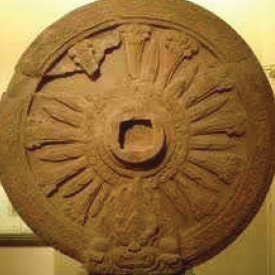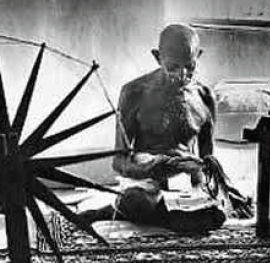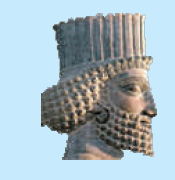Ashoka, Emperor
This is a collection of articles archived for the excellence of their content. Readers will be able to edit existing articles and post new articles directly |
Ashoka, Emperor
The doctrine of pluralism
India Harmony VOLUME - 1 : ISSUE - 6 SEPTEMBER-OCTOBER, 2012
By Dr. Vinita Gardner
Perhaps the dichotomous legacy of War and Peace has nowhere been more profoundly illustrated than in the life and times of the greatest Mauryan emperor – Emperor Asoka – and nowhere been more magnificently incorporated than in the metamorphosis of his mind!
On a crumbling stone edict dating from Emperor Asoka's 3rd century BC empire, the following decree was announced, “The faiths of others all deserve to be honored for one reason or another. By honoring them, one exalts one's own faith and at the same time performs a service to the faiths of others. By acting otherwise, one injures one's own faith and also does a disservice to that of others.” This enlightened message was, perhaps, the world's first example of an official state decree establishing the doctrine of pluralism—and interestingly enough, it was an empire that governed over most of the subcontinent, including modern-day Bangladesh.
But that was later, much later, in the life of this benign emperor who held sway over a vast empire extending from the Hindu Kush mountains in Afghanistan to the present-day Bangladesh and the Indian state of Assam in the east, and as far south as northern Kerala and Andhra Pradesh…..
In 261 B.C. Asoka waged the historic battle of Kalinga and the mindless monumental carnage that he witnessed there, completely changed his outlook on life! The mighty ruler was so emotionally moved by the loss of about 1,00,000 innocent lives, that he decided to embrace Buddhism and turned his attention to constructive attempts to rebuild his empire on lines of peace and harmony.
The name 'Ashoka' translates as “without sorrow” in Sanskrit. Ashoka was the first ruler of ancient Bharata (India), after the famed Mahabharata rulers, to unify such a vast territory under his empire, which in retrospect exceeds the boundaries of the present-day India.
The British author H. G. Wells (1866-1946) wrote of Ashoka: "In the history of the world there have been thousands of kings and emperors who called themselves 'Their Highnesses', 'Their Majesties' and 'Their Exalted Majesties' and so on. They shone for a brief moment, and as quickly disappeared. But Ashoka shines and shines brightly like a bright star, even unto this day" (1922). Culling from the vestiges of a deep sorrow, a radiant path of enlightenment which people traverse with reverential tread even today…..
But, before we turn back the dusty pages of history and meander down the labyrinthine alleys of time…..to another time, another place…. I would like to share a fascinating story about Asoka related in the “Asokavadana” – a book about the life and reign of Asoka, written sometime in the 2nd century A.D……
Long ago, in a little village in India, there lived a child called Jaya. One day Gautam Buddha came to his village.
The villagers gathered round the Buddha, welcoming him into their village. They made a comfortable seat for him in the cool shade of a leafy peepul tree. The women washed the dust of travel from his feet, and offered him fruit to eat and cool water to drink.
The child watched fascinated. He could not take his eyes off the face of the Buddha, the quiet calm countenance, the deep dark eyes, the air of contentment. He couldn't understand much of what the Buddha said, but marveled instead at the sound of his voice, soft, serene, and full of conviction. The men and women listened enthralled as the Buddha spoke continuously all through the day and night, in his mellifluent tones; so did the child, his hunger and thirst completely forgotten!
Tired, he must have dozed off sometime in the night and when he awoke, he found the Buddha preparing to leave and a deep surge of love welled up in his heart. He did not want the Buddha to leave and desperate to show him his devotion, picked up a handful of dust from his feet and mutely offered it to The Enlightened One!
The Buddha was touched by the faith he saw in the child's eyes. He smiled and accepted the child's offering, and blessed him.
The child never saw the Buddha again, but carried his image in his spirit forever. It is said that this child was reborn as Ashoka, one of the greatest emperors of ancient India, who effected many conquests successfully. The carnage at Kalinga brought about a turning point and he never looked back….
As the legend goes, one day after the war was over, Ashoka ventured out to roam the city and all he could see were burnt houses and scattered corpses. This sight made him sick and he cried the famous monologue:
“What have I done? If this is a victory, what's a defeat then? …….. Is this justice or injustice? Is it gallantry or a rout? Is it valor to kill innocent children and women? Do I do it to widen the empire and for prosperity or to destroy the other's kingdom and splendor? One has lost her husband, someone else a father, someone a child, someone an unborn infant........”
Ashoka replaced conquest by force with what he called “conquest by righteousness” (dhammavijaya). He was possibly the first monarch to renounce violence, yet he remained a powerful and influential king, although the empire did decline after his death.
Combining personal and state ethics in an almost heroic effort to bridge the divides in his multicultural empire, Emperor Ashoka, undoubtedly, has to be credited with being the one to effect the first serious attempt to develop a Buddhist polity, by putting into practice the Buddha's own advice on kingship and government contained in the Dasa Raja Dharma, including the following ten precepts:
1) Be liberal and avoid selfishness 2) maintain a high moral character 3) be prepared to sacrifice one's own pleasure for the well-being of the subjects 4) be honest and maintain absolute integrity 5) be kind and gentle 6) lead a simple life for the subjects to emulate 7) be free from hatred of any kind 8) exercise non-violence, 9) practice patience and 10) respect public opinion to promote peace and harmony!
Believing that his code of reverence and compassion was based on universal values, Asoka published14 edicts to reiterate and enhance the principles mentioned above. His fourteen-point code aimed to hold inner morality and outer action in complete harmony! Turning away from the kingship of power, compulsion and self-interest, and daring to believe that he could construct a different kind of kingdom based on causing no one harm, he left behind a legacy unparalleled in its scope and munificent in its manifold manifestations…..
In Kalinga Rock Edict One, he instructed his judicial officers, warning them that they would not be promoted unless they furthered his desire:
All men are my children. What I desire for my own children, and I desire their welfare and happiness both in this world and the next, that I desire for all men. You do not understand to what extent I desire this, and if some of you do understand, you do not understand the full extent of my desire.
Whereupon socially conscious Indian writer Gita Mehta exhorts contemporary nuclearbomb possessing India to profitably emulate Asoka's example thus:
Peaceful coexistence, religious tolerance, social welfare, ecological responsibility, education, impartial justice, respect for all living things-is it possible that these were practiced over such a huge land mass occupied by so many millions of people two-and-a-half millennia ago? And if they were possible then, why can't they be practiced now?!!
Travelling back in time to an era that witnessed the magnificent resurgence of human values and the spread of a benevolent faith, it would only be fitting to recapitulate the enlightened emperor's extensive efforts for the promulgation of his principles – and his faith – far and wide!
Ashoka is mainly remembered in the ancient texts as a patron of Buddhist missionary endeavor. His son, the Venerable Mahindra and daughter Sanghamitta, a Bhikkuni (whose name means "friend of the Sangha"), were instrumental in this noble endeavor , establishing Buddhism in Ceylon and taking copies of the Pali canon of Buddhist scripture (the Tipitaka) with them, which was formalized at the third Buddhist Council convened by Ashoka. Ashoka built thousands of stupas and Viharas for his devout Buddhist followers. The Stupas of Sanchi are world famous and the stupa named “Sanchi Stupa 1” was built by him.
Ashoka's role in the spread of Buddhism to other countries, cannot be underestimated! . Bhikkunis in Sri Lanka, one of the most important Buddhist societies today and a center of Buddhist scholarship, still trace their lineage right back to Ashoka's daughter and to the retinue of nuns who traveled to Sri Lanka with her, ages ago! Although the order had a thousand-year absence in Sri Lanka, it was preserved in Korea and Japan and re-introduced into Sri Lanka in the last century; the pacific doctrine also reached distant China!
Most of the pillars on which his edicts were inscribed are between 40 and 50 feet tall and weigh up to fifty tons each! They have been found in about thirty locations in modern-day India, Nepal, Pakistan, and Afghanistan.
The sandstone pillars of Asoka at Sarnath are the most popular, providing valuable insight into his Mauryan kingdom! When India gained independence from the British Empire, it symbolically adopted Ashoka's emblem for its own, placing the dharma wheel that crowned his many columns, on the flag of India of the newly independent state. Before that, in the fight for Independence, Mahatma Gandhi followed Ashoka’s policy of non-violent resistance!
Indeed, in eschewing violence so determinedly, establishing hospitals for the care of animals, banning slaughter, giving alms to the poor and needy, respect to Brahmans, priests and parents, Asoka was unbeatable!
From the munificent endeavors of magnanimous monarchs and the enlightened ideologies of thinkers, from the womb of pulsating India, still nourishing unborn lives, can we not craft a nation without eternal strife – a colossus of cultural unity epitomizing the magnificent policies of Asoka, Akbar ….. and Gandhi?







